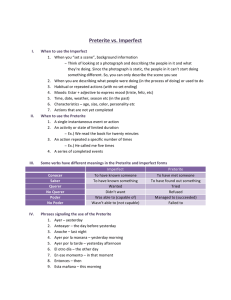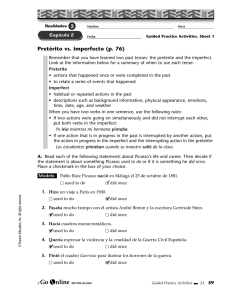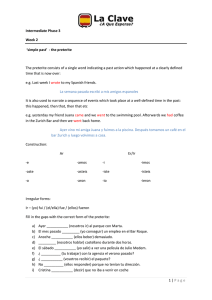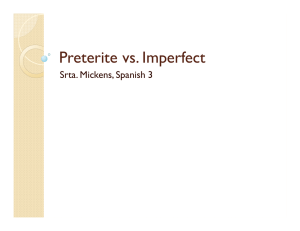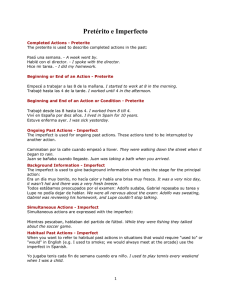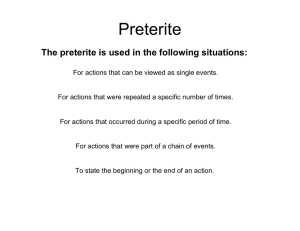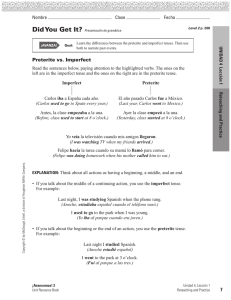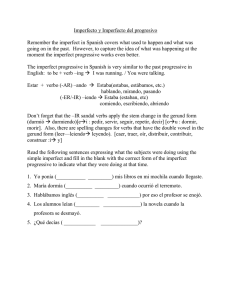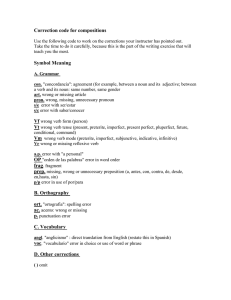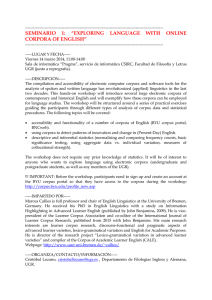Photo Album
Anuncio
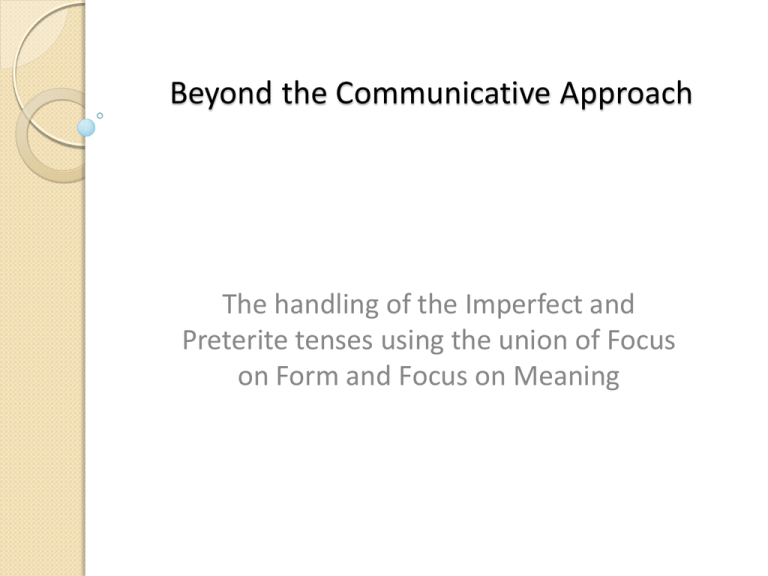
Beyond the Communicative Approach The handling of the Imperfect and Preterite tenses using the union of Focus on Form and Focus on Meaning How is Applied Linguistics Theory ‘applied’ in the Foreign Language classroom? Focus on Form and Focus on meaning ● “For forms that are frequent in the input and yet still seem to lack salience for learners, it may be that other means are required to induce learners to notice” (Doughty & Williams, 1998). ● It allows the learner to concentrare on the grammatical rules and the construct of the language. ● Focus on meaning A focus on meaning approach would be concerned with getting the L2 learner to concentrate solely on understanding the message being conveyed. 3 Which type of focus is most beneficial to the students? Perhaps a combination? Focus on Form vs Focus on meaning research Doughty study 1991 favored FonF Alanen’s results in 1995 favored a FonM approach Van Patten argues that there is a trade-off between the two (when one is focused on , the learner’s capacity on the other suffers) Some researchers believe that the learner’s preference is a significant factor in determining the type of focus. Language learner’s preferences studies. Graphic representation of the Preterite and Imperfect tenses in Spanish Preterite Imperfect El atleta saltó la valla. (describir el pasado) El atleta saltaba la valla. (contar el pasado) Preterite and the Imperfect in the Textbooks: BEYOND A LIST OF USES Vista Higher Learning Vista Higher Learning Exercises: Preterite vs Imperfect in Enfoques 1. Ayer _________ (conocía/conocí) a todos los vecinos de mi cuadra en una fiesta que organizó una vecina. 2. Los paramédicos llevaron al conductor del autobús al hospital porque ___________ (tenía/tuvo) varias fracturas. 3. Cuando era niño, ___________________ (jugaba / jugué) con mis amigos. 4. Cuando era niño, ___________________ (ganaba / gané) una medalla. (testing program) Highlighting the speaker’s intention: Union of Focus on Form and Focus on Meaning Proposed activities FonF: proposed activities For better didactics: • The Union of FonF and FonM in the handling of the Preterite-Imperfect dilenma has been of significance (student’s path to mastery) • Can’t rely solely on textbook • It’s the teacher’s task to do an analysis of the needs of the students to better facilitate the transfer of knowledge • Understand students’ preferences about the type of focus to select. • Review the exercises before assigning them to the students • Give students a chance to create their own narrative • Provide students with sufficient opportunities to practice.
